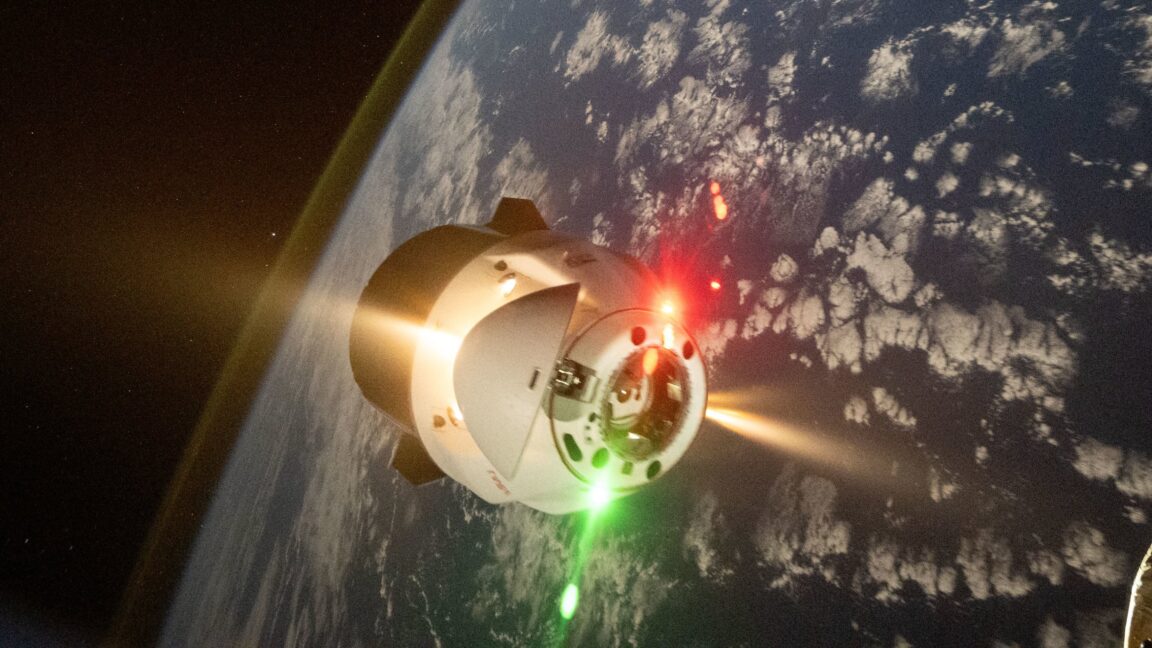“Our capsule’s engines are not pointed in the right direction for optimum boost,” said Sarah Walker, SpaceX’s director of Dragon mission management. “So, this trunk module has engines pointed in the right direction to maximize efficiency of propellant usage.”
When NASA says it’s the right time, SpaceX controllers will command the Draco thrusters to ignite and gently accelerate the massive 450-ton complex. All told, the reboost kit can add about 20 mph, or 9 meters per second, to the space station’s already-dizzying speed, according to Walker.
Spetch said that’s roughly equivalent to the total reboost impulse provided by one-and-a-half Russian Progress cargo vehicles. That’s about one-third to one-fourth of the total orbit maintenance the ISS needs in a year.
“The boost kit will help sustain the orbiting lab’s altitude, starting in September, with a series of burns planned periodically throughout the fall of 2025,” Spetch said.
After a few months docked at the ISS, the Dragon cargo capsule will depart and head for a parachute-assisted splashdown in the Pacific Ocean off the coast of California. SpaceX will recover the pressurized capsule to fly again, while the trunk containing the reboost kit will jettison and burn up in the atmosphere.
SpaceX’s Dragon spacecraft approaches the International Space Station for docking at 7:05 am EDT (11:05 UTC) on Monday.
Credit:
NASA TV/Ars Technica
While this mission is SpaceX’s 33rd cargo flight to the ISS under the auspices of NASA’s multibillion-dollar Commercial Resupply Services contract, it’s also SpaceX’s 50th overall Dragon mission to the outpost. This tally includes 17 flights of the human-rated Crew Dragon.
“With CRS-33, we’ll mark our 50th voyage to ISS,” Walker said. “Just incredible. Together, these missions have (carried) well over 300,000 pounds of cargo and supplies to the orbiting lab and well over 1,000 science and research projects that are not only helping us to understand how to live and work effectively in space… but also directly contributing to critical research that serves our lives here on Earth.”
Future Dragon trunks will be able to accommodate a reboost kit or unpressurized science payloads, depending on NASA’s needs at the space station.
The design of the Dragon reboost kit is a smaller-scale version of what SpaceX will build for a much larger Dragon trunk under a $843 million contract signed with NASA last year for the US Deorbit Vehicle. This souped-up Dragon will dock with the ISS and steer it back into the atmosphere after the lab’s decommissioning in the early 2030s. The deorbit vehicle will have 46 Draco thrusters—16 to control the craft’s orientation and 30 in the trunk to provide the impulse needed to drop the station out of orbit.
